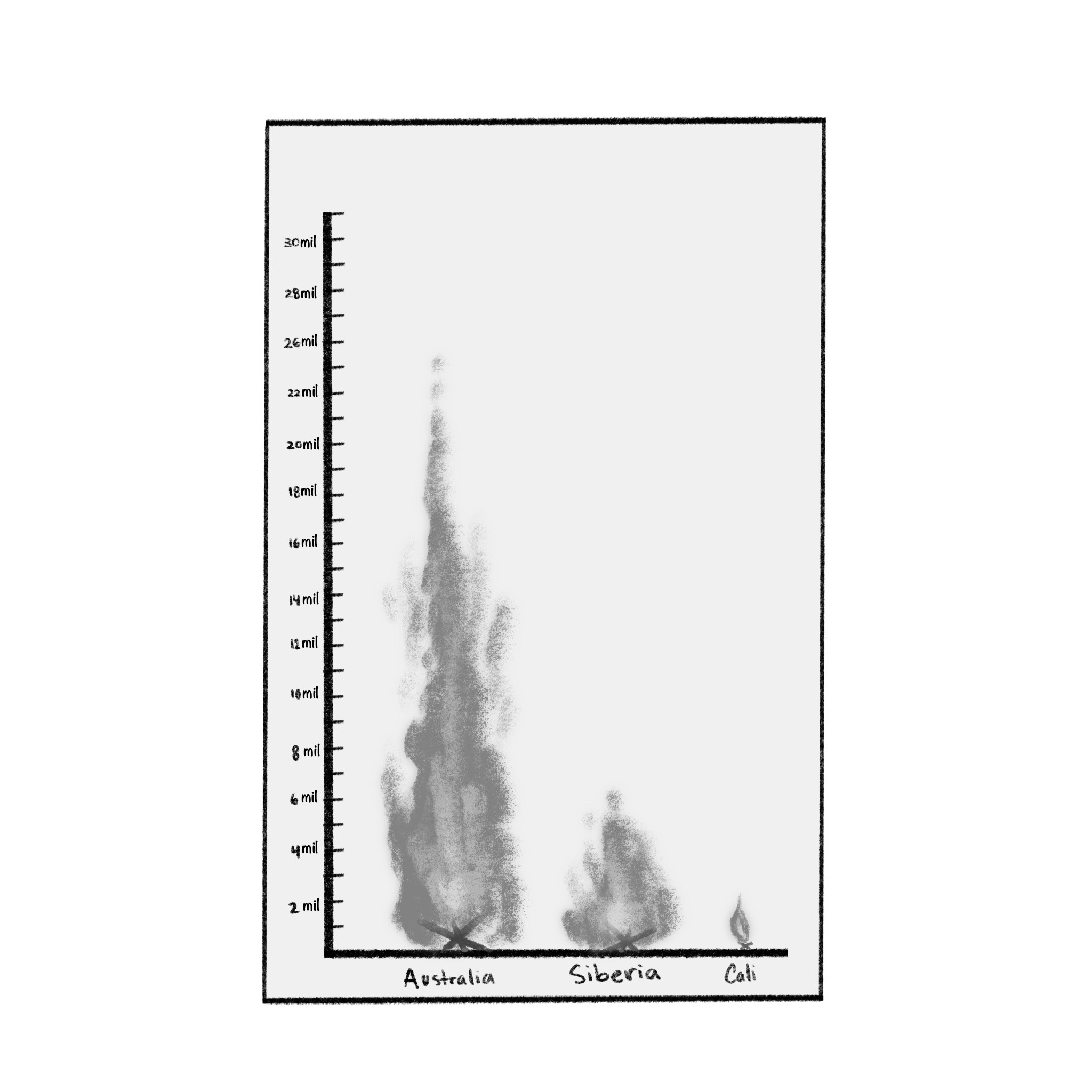

Over the past few months, Australia suffered from wildfires caused both by human and natural activity. Lightning strikes in dry,drought affected forests and the blazing heat of the Australian summer have resulted in increased natural wildfire chances. Since Nov. 2019, almost 200 people have been arrested for committing a fire-related offense.
Fire season is typical during the Australian summer, but this year conditions are much more harsh. A heatwave back in Dec. 2019 broke the record for highest nationwide temperature. The heat also resulted in one of the worst droughts of the decade with civilians enduring temperatures of around 120 degrees Fahrenheit. The smoke has also begun to spread worldwide, reaching from Australia to as far as New Zealand, with a potential chance to travel further as a “fire cloud” NASA said in a statement.
The wildfires have already done much more damage than those in areas like California. Eucalyptus plants, which are most common in Australia, are part of the reason.
“There is a lot more land [in Australia] that has forested area [which] also has a very different constitution of vegetation,” said biology teacher Katherine Ward. “Eucalyptus has a high concentration of oils in its bark and is like a matchbox. These trees are very oily [and] it’s easy to light them on fire if they dry out. [In California] the majority of what we have that’s been burning is pine. There’s oil in it, but it tends to be a more wetwood.”
While about 2 million acres in total in California have been burned as well as 6 million in Siberia, according to comparison diagrams on Vice, more than 25 million acres have been burned in Australia with about 29 civilians killed and over 2,000 buildings burned.
The article “Facts + Statistics: Wildfires” from the insurance information institute reveals that one billion Australian animals have been killed. Many more have also lost their habitats as the wildlife has been widely affected, bringing many species to the brink of extinction.
“Australia has a large number of species that are only found in Australia,” said environmental science teacher Jessica Valera. “A lot of those [native] species are specialists [and therefore] only live within very narrow ranges for habitats.“
A more unusual part of the Australian wildfires is how they are showing no signs of stopping despite the 3,000 firefighters that are battling the blazes. While most Californian wildfires have lasted just a few days to a couple weeks, the ones in Australia have been continuously spreading for several months.
At Aragon, students are helping to donate to help the Australian wildfires.
“[For] Green Team, we’re trying to get people to donate to the Australian Red Cross and we actually have a bulletin board in between B and C Hall with a link to their web page,” said freshman Green Team member Jacob Berenstein.
There has been an outpouring of support around the world, though the devastating environmental impact will be felt for many years to come.



